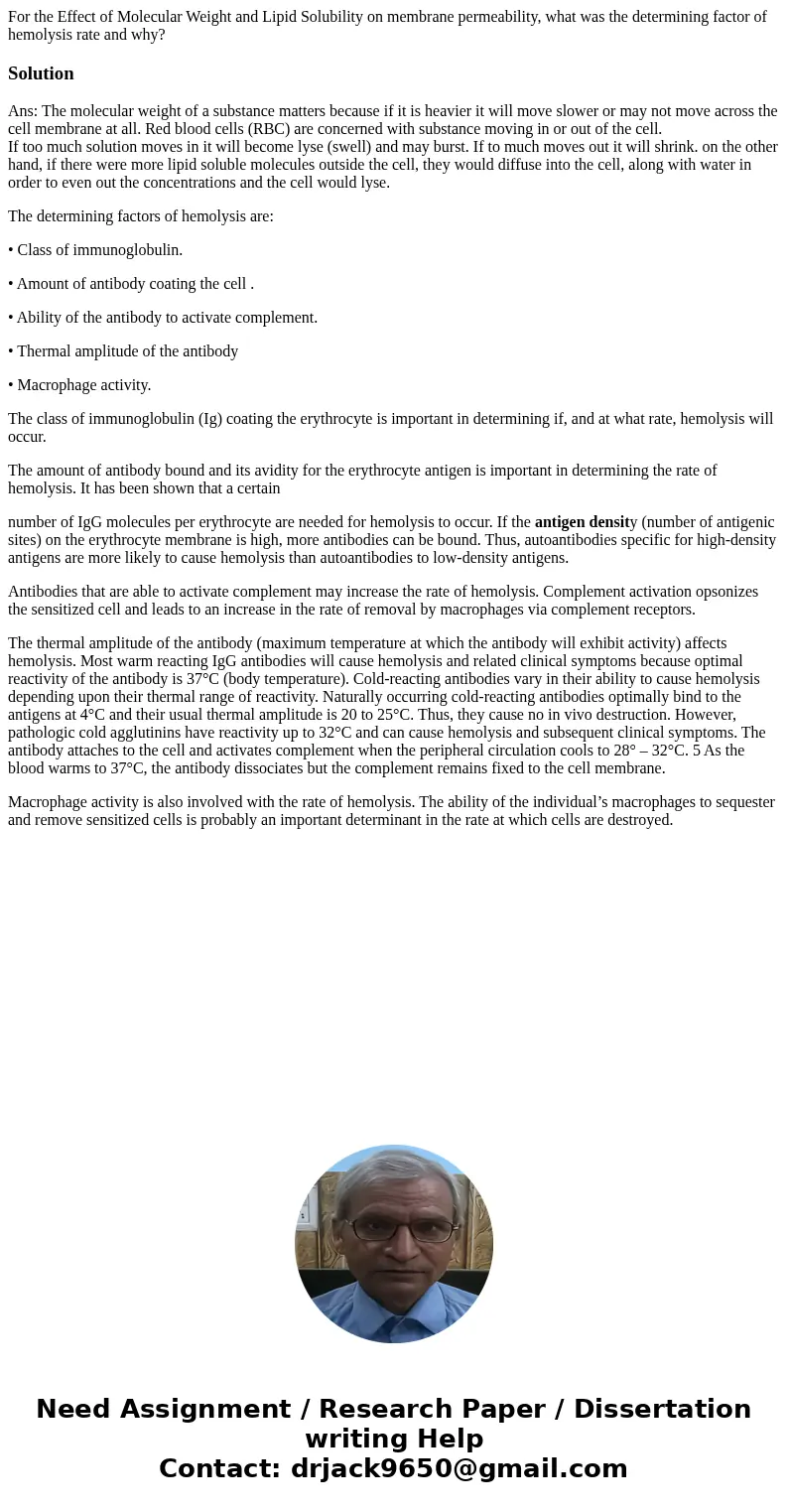For the Effect of Molecular Weight and Lipid Solubility on m
For the Effect of Molecular Weight and Lipid Solubility on membrane permeability, what was the determining factor of hemolysis rate and why?
Solution
Ans: The molecular weight of a substance matters because if it is heavier it will move slower or may not move across the cell membrane at all. Red blood cells (RBC) are concerned with substance moving in or out of the cell.
If too much solution moves in it will become lyse (swell) and may burst. If to much moves out it will shrink. on the other hand, if there were more lipid soluble molecules outside the cell, they would diffuse into the cell, along with water in order to even out the concentrations and the cell would lyse.
The determining factors of hemolysis are:
• Class of immunoglobulin.
• Amount of antibody coating the cell .
• Ability of the antibody to activate complement.
• Thermal amplitude of the antibody
• Macrophage activity.
The class of immunoglobulin (Ig) coating the erythrocyte is important in determining if, and at what rate, hemolysis will occur.
The amount of antibody bound and its avidity for the erythrocyte antigen is important in determining the rate of hemolysis. It has been shown that a certain
number of IgG molecules per erythrocyte are needed for hemolysis to occur. If the antigen density (number of antigenic sites) on the erythrocyte membrane is high, more antibodies can be bound. Thus, autoantibodies specific for high-density antigens are more likely to cause hemolysis than autoantibodies to low-density antigens.
Antibodies that are able to activate complement may increase the rate of hemolysis. Complement activation opsonizes the sensitized cell and leads to an increase in the rate of removal by macrophages via complement receptors.
The thermal amplitude of the antibody (maximum temperature at which the antibody will exhibit activity) affects hemolysis. Most warm reacting IgG antibodies will cause hemolysis and related clinical symptoms because optimal reactivity of the antibody is 37°C (body temperature). Cold-reacting antibodies vary in their ability to cause hemolysis depending upon their thermal range of reactivity. Naturally occurring cold-reacting antibodies optimally bind to the antigens at 4°C and their usual thermal amplitude is 20 to 25°C. Thus, they cause no in vivo destruction. However, pathologic cold agglutinins have reactivity up to 32°C and can cause hemolysis and subsequent clinical symptoms. The antibody attaches to the cell and activates complement when the peripheral circulation cools to 28° – 32°C. 5 As the blood warms to 37°C, the antibody dissociates but the complement remains fixed to the cell membrane.
Macrophage activity is also involved with the rate of hemolysis. The ability of the individual’s macrophages to sequester and remove sensitized cells is probably an important determinant in the rate at which cells are destroyed.

 Homework Sourse
Homework Sourse